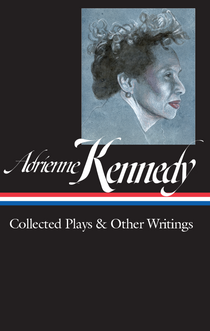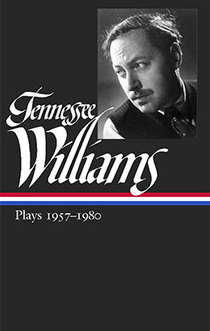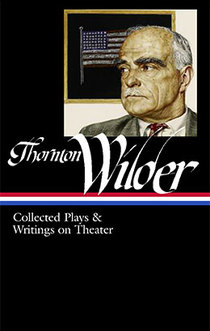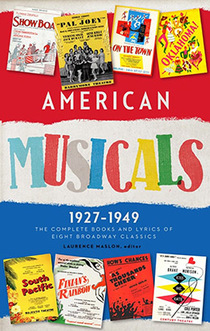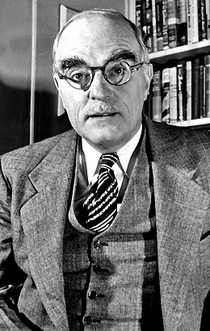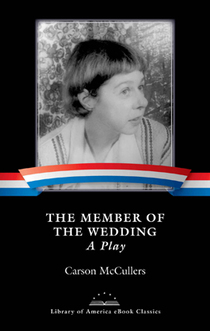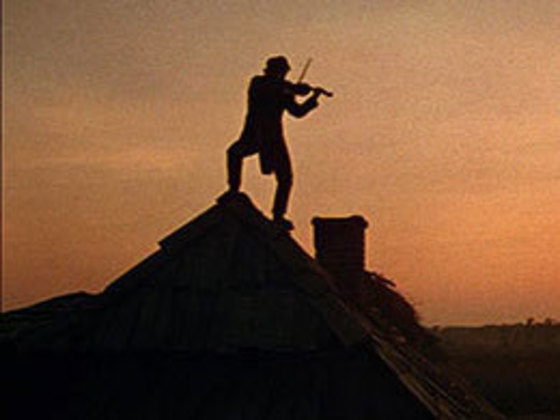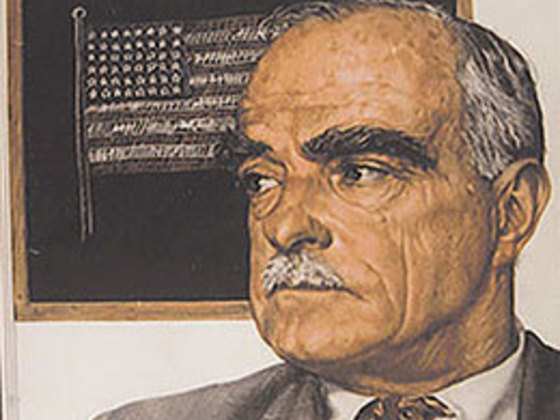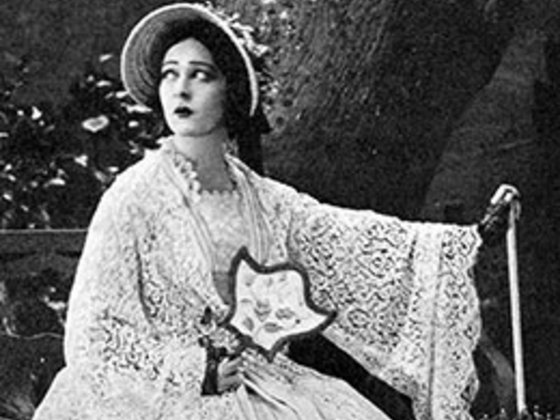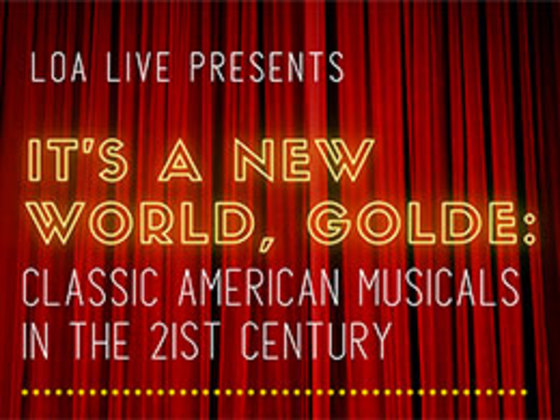Theater & Plays
By Laurence Maslon
Community means complicity in the tough-minded new Broadway revival of Rodgers and Hammerstein’s 1943 classic.
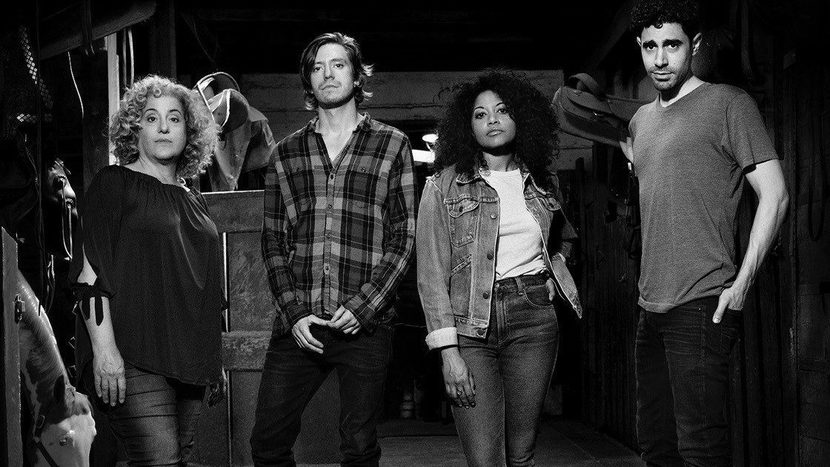
Here’s the dirty little secret about those rosy-hued musicals from Broadway’s Golden Age of the 1940s, ’50s, and ’60s; they all have dirty little secrets. They are all far more mature—and far more complex—than they are usually credited with being. This is the result of the way we typically encounter them—in denatured film versions, edited selections from cast recordings, high school and summer camp productions—each, in its way, shellacking the original with a patina of candy-coated sentimentality.
The current Broadway revival of Rodgers and Hammerstein’s groundbreaking 1943 classic Oklahoma! has garnered eight Tony Award nominations; the awards ceremony is this Sunday night at Radio City Music Hall. This production strips away the sentimental patina the show has acquired with the ferocity of an orbital power sander.
From the moment audiences descend into the three-quarter thrust space at the Circle in the Square Theater, the rough-hewn plywood setting makes it clear that this version of the musical has, literally, sanded off seventy-five years of production history. Gun racks surround the auditorium, bristling with all sorts of firearms. Communal tables and benches are placed on the stage for audience members, who, during intermission, can sample some simmering chili and some baked cornbread (artfully “churned” in the mixing bowl during the first scene by Aunt Eller, the show’s emotional center, played by the fantastically grounded Mary Testa). A twelve-person cast, dressed rather subtly in modern-day costumes, is backed by a a seven-member bluegrass combo, honoring both Rodgers’s glorious score and the folk roots of the characters. In his famous entrance to “Oh, What a Beautiful Mornin’!,” Curly (Damon Daunno) accompanies himself on acoustic guitar. Some of director Daniel Fish’s more avant-garde directorial concepts get in the way—there are nearly enough contemporary hipster touches that, at times, you’d think you crossed east of the Hudson River to Williamsburg rather than west of the Mississippi to the prairie—but, in general, the production is quite successful at plumbing the text’s deeper and darker intentions.
Practically no alterations were made to Oscar Hammerstein II’s actual book and lyrics, other than excising some jokes and incongruities. They were hardly necessary, considering what complexities already exist in the text (and in Lynn Riggs’s original 1931 play, Green Grow the Lilacs, from which the musical was adapted). It’s worth recalling that the central context of the piece—Oklahoma’s evolution from territory to statehood in 1907—involved the U. S. government moving and confining Native American tribes on the prairies to officially designated territories. Whether the consequences of Oklahoma’s statehood deeply entered Oscar Hammerstein II’s consciousness or not, he was twelve years old when it happened—Rodgers was five—so they were certainly within living memory. Tellingly, the word “Indian” is never uttered in Oklahoma!—the stage directions reveal the setting curtly as “Indian Territory. Now Oklahoma.” However good-natured the characters in the show many seem, they are all caught up in the tide of Manifest Destiny. Even back in 1943, Curly’s speech before he goes into the title number gave notice that anything standing in the way of westward expansion was going to be sacrificed:
Oh, things is changin’ right and left! Buy up mowin’ machines, cut down the prairies! Shoe yer horses, drag them plows under the sod! They gonna make a state outa this, they gonna put it in the Union! Country a-changin’, got to change with it!
| Oklahoma! is included in |
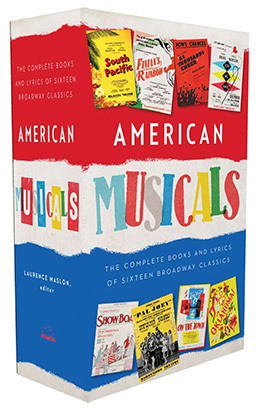 |
| American Musicals: The Complete Books and Lyrics of 16 Broadway Classics (Two volumes) |
What is most pointedly revealed in this revival is how much change the local denizens are willing to allow in order to change with the expanding country. Obsession, rivalries, revenge, infidelity, guns, gunslinging, death, and frontier justice have always been part of Oklahoma! Although the romance between Curly and Laurey commands most of the show’s musical attention, at the center of the plot is the rivalry between the aggressively optimistic cowhand Curly and the saturnine farmhand Jud. Curly implies to Jud their respective differences: “In this country, they’s two things you c’n do if you’re a man. Live out of doors is one. Live in a hole is the other.” At the end of this Oklahoma!, it becomes clear that, in order to move this embryonic community forward, folks need to abandon anyone who prefers to live in a hole. If “territory folks should stick together,” community requires complicity. As Aunt Eller puts it, in a jaw-dropping moment of frontier justice at the end of this production: “Oh, lots of things happen to folks. . . You gotta be hearty, you got to be. You cain’t deserve the sweet and tender things in life less’n you’re tough.”
In this revival, it’s hard not to see the toughness of both Oklahoma and Oklahoma! as part of our complex national psyche. In some ways, the musical shares a commonality with Laura Ingalls Wilder’s familial view of western expansion—the hardscrabble edges of both have frequently been softened by more palatable portrayals in various media—but, perhaps, in 2019 we can absorb the fact that Oklahoma! may have more in common with Cormac McCarthy’s fatalistic perspective of the American West. We know we belong to the land; how grand that land actually is—well, that’s a question worth chewin’ on.
Video: Official trailer for Oklahoma! on Broadway
Laurence Maslon is the editor of the Library of America’s two-volume American Musicals: The Complete Books and Lyrics of 16 Broadway Classics 1927–1969 which, of course, includes Oklahoma!
